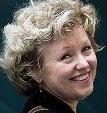
By Georgeanne Irvine
Research, research, and more research is fun, fun, and more fun for me whenever I’m writing an article or a book! Over the past month I’ve had an absolute blast researching the saga of Snugglepot and Cuddlepie—the San Diego Zoo’s first-ever koalas—who arrived from Australia in 1925. I'm including their tale in a colorful, high-end brochure that will help the Zoo raise money for a splendid new koala exhibit.
Snugglepot and Cuddlepie also have the distinction of being the first koalas to live in a zoo outside Australia, which was big news back in the 1920s. I was thrilled to discover that our Zoo library has newspaper clipping books dating back to 1916 when the Zoo was founded, and that they contain a wealth of stories about the expedition that brought these precious marsupial superstars to San Diego.
The adventure itself was filled with drama and intrigue. I can only imagine what it must have been like for Zoo director Tom Faulconer to travel across the Pacific Ocean by steamship in December 1924 with 200 North and Central American animals onboard. He was the sole Zoo employee on the trip, responsible for everything from travel logistics to feeding the animals and cleaning their crates! In January 1925, he returned to San Diego with 200 unusual Aussie critters in tow. All aspects of the tale mesmerized me: major storms, seasick animals, an alligator escapee on deck with the passengers, a king cobra in Faulconer’s stateroom, the koalas nearly missing the ship to the U.S., and many more escapades.
I was also fascinated by the writing style featured in the old newspaper clippings. The choice of words and phrases enchanted and sometimes amused me. By today’s standards some words have taken on different meanings, others might be considered old-fashioned, and a few would be deemed inappropriate. Below are some of my favorite headlines and passages, which include the original grammar and punctuation. Enjoy your journey back in literary time!
A KOALA IS…
Dec. 21, 1924 (The San Diego Union)
A droll little fellow, abnormal in many ways, he is the original Teddy Bear. His little, podgy, tailless body, short thickset head and round, tufted ears lead some countenance perhaps to the ursine analogy, but there the likeness ends. When irritated or disturbed they utter a cry described as a hoarse groan. Young Koalas make delightful household pets. They are naturally docile and quickly become attached to their owners, following them about the premises.
Feb. 6, 1925 (Philadelphia Inquirer, photo caption)
“Teddy Bear” Models: Two little Koala bears from Australia, which have been brought all the way from the Antipodes to the San Diego, Calif. Zoo, where they are the friendliest of all the inmates.
Sept. 29, 1925 (The San Diego Union)
He can climb anything, and when attacked, if unable to save himself by climbing he will lie on his back and swing his mean claws. But the koala is very affectionate and is fond of petting parties, never offering to attack a human being.
August 1943 (ZOONOOZ article about the 1925 expedition)
The little grey chap weighs only four or five pounds as a rule, and most of that is wool. He has a shoe-button black nose and glassy eyes that look like big marbles. Being nocturnal by nature, his daylight hours are spent in such moveless quiet that one might easily mistake him for a doll, and no child or woman can resist the temptation to cuddle him.
KOALAS IN THE NEWS
Dec. 21, 1924 (The San Diego Union)
Zoo To Have Koala Bears: Interesting Description of These Little Known Animals
Since the word got around the Director Tom Faulconer of the zoo had gone to Australia to bring back Koala bears among other specimans, and that the zoo was going to undertake the propagation of them, the telephone at the Zoological garden office has been ringing constantly. A surprisingly large number of people are interested in various ways regarding the proposed undertaking, and the situation has at times taken a humorous turn. This was especially true when a prudish little old soul, fearful of the savagery of the beast, insisted that the zoo abandon the idea before lives were lost.
Jan. 24, 1925 (Honolulu Star-Bulletin)
Steamer Carries Cargo of Queer Animal Life
…”Bill” King, a passenger specialist for the local offices of the Oceanic line, had an unexplained leeriness in his eye as he climbed up her Jacob’s ladder yesterday morning. He had had advance information about the queer passengers aboard her, but had taken no one into his confidence. He looked gingerly up and down the companion-ways before entering. He shied from coils of rope. When one considers that there was a 30-foot hamadryad cobra aboard and ten smaller ones of the same tribe, recently brought from India to Australia as particular pets for Faulconer, it is not to be wondered at.
Jan. 27, 1925 (San Diego Sun)
Weird Animals Due for San Diego Zoo: Tom Faulconer Returns From Australia With Queer Collection of Birds and Animals
With enough kangaroos to hold “kangaroo court” every day in the month and enough weird birds and snakes to furnish scenery for a Dantesque picture of Delirium Tremens, Tom Faulconer, director of San Diego’s famous zoo, is on his way from San Francisco to make the Balboa park institution rank second among the zoological gardens in the United States.
On his arrival in Australia, he made the old stories of horse traders pale into insignificance. Swapping a rattlesnake for a wombat, a wildcat for an egg-laying echidna, and so on down the line, would unfold a tale of barter that might have been entitled “What Made the Wildcat Wild.”
As a result, the San Diego zoo will be enriched by some 28 kangaroos, to say nothing of an assortment of bandicoots, dingoes, phalangers, wallabies and whatnot. What may all these things be? Search us!
Jan. 28 1925 (San Diego Sun)
Weird Guests of Local Zoo Arrive Today
If you heard loud, weird noises emanating from the foot of Broadway about 1 o’clock today, don’t be alarmed. It was neither some new murder being perpetrated, nor was it a band of Cocopah Indians on the war path—it was merely 100 birds, together with a miscellaneous assortment of animals and reptiles completing their long journey from Australia.
Jan. 28, 1925 (San Diego newspaper—clipping didn’t include publication name)
Zoo Folk Sick for Haunts in Australia
Waves of homesickness are passing over the San Diego zoo in Balboa park today where the new visitors brought here yesterday by T.N. Faulconer, director, from Australia, are striving to become acquainted with their new surroundings. On the other hand, many of San Diego’s wild animals are somewhere in Australia longing for their Cuyamaca mountain trails and their comfortable homes in Mission Valley.
San Diego native Georgeanne Irvine has devoted more than three decades of her career to raising awareness about animals and wildlife conservation. By day, she is associate director of development communications for the San Diego Zoo, where she has worked for 33 years. George is also the author of more than 20 children’s books plus numerous magazine, newspaper, and Web articles. George’s most recent work is the coffee table book, The Katrina Dolphins: One-Way Ticket to Paradise, which is a true story about 8 dolphins from an oceanarium that were washed out to sea during Hurricane Katrina in 2005 and dramatically rescued a few weeks later.












5 comments:
Hi Georgeanne -
Thanks for sharing the story of Snugglepot and Cuddlepie! We've always been pretty proud of the expedition. You see, TN Faulconer was my great-grandfather. If you're interested, I have copies of some old photos of the bears.
Rachel
Hi Rachel,
Your comment made my day!!! I would LOVE to see the photos and am so excited to hear from you. Your great-grandfather was an amazing man--only a super hero could take on such a huge expedition single-handedly like he did! His 1943 ZOONOOZ article was fascinating. Please touch base via my Zoo e-mail at girvine@sandiegozoo.org. Looking forward to meeting you!
This is fascinating. Thanks for this vivid story!
A most fascinating article! We've crossed many borders and feel much closer to these creatures now, not to mention the impressive improvement in our name selections. Snugglepot and Cuddlepie? Come on!
Thanks for sharing. I learn much from you.
Zoe (Zohreh)
George! Great post!
Post a Comment